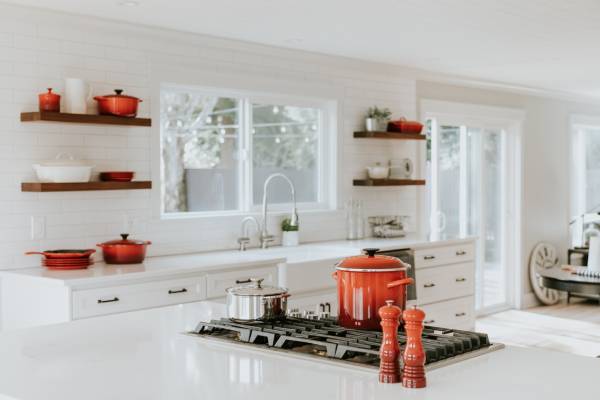
Pots and Pans: A Guide for Novices in the Kitchen
- Lifestyle
- October 6, 2021
Kitchens in homes are a space that houses various equipment and vessels, more than other rooms. Blenders, pans, pots, plates, cutlery, and food items ranging from groceries to cooking ingredients, are the usual finds in a kitchen. The kitchen plays the role of both storage and function, allowing people to prepare home-cooked meals effortlessly. And with several people moving into their own homes or starting an independent life, they sometimes find kitchen utensils and equipment mystifying. Several vessels may perform the same function, and some tools require other accessory tools to perform better. Also, some equipment has a specific purpose and using them for alternate operations might render them unusable, etc.
So, most people know the standard necessities in a kitchen like a frying pan, saucepans, grills, stoves, cutting boards, knives, and more. But they may not know the various available models and might purchase one that doesn’t suit their cooking habits. That being said, one of the primary aspects to check for in pots and pans is their material. The material determines various characteristics of the cooking style and the food’s taste. Hence, people must first familiarise themselves with cooking utensils and their types before purchasing them for their kitchens.
Understanding Materials
Frying pans, saucepans, skillets, etc., are a few standard requirements for any dish of most cuisines. These pans come in various shapes, sizes, materials and include several accessories like lids and handles.
Ceramic
Ceramic pans are in vogue today globally for their aesthetic finish and colour variety. Ceramic pans offer even heating, meaning the food has heat spread over it evenly, allowing for efficient cooking of meat or veggies. Ceramic pans are also easier to clean due to the non-stick surfaces, making them a hit among several cooks. The ceramic coating also offers a sleek shine, and the interiors are usually lighter than the exterior. People can find these pans frequently on cooking videos and social media posts.
Cast Iron
While ceramic is the public favourite, cast iron pans are also making a comeback. Cast iron skillets and pans are the heaviest utensils, and people should exercise caution while handling them. This material was the traditional go-to choice earlier before innovation led to other materials entering the market. Cast iron heats quicker, allowing for faster cooking, and spreads the heat evenly for uniform cooking. Moreover, cast Iron comes with a black finish for more aesthetic appeal, encouraging people to purchase them.
Stainless Steel
Stainless steel is one of the most hassle-free materials in the kitchen for its low maintenance. The material is stain-resistant and effortless to clean, and it comes in various shapes and sizes for all uses. But the only reason people prefer other materials to stainless steel is its aesthetics. But today, more people find the metallic finish of stainless steel attractive, and the purchases are rising. Manufacturers are also adding other aesthetic embellishments like design engravings, handles, etc., to add to the aesthetics of the frying pan or saucepan.
Copper
Copper vessels and utensils are a favourite among health enthusiasts for their benefits. Copper metal naturally disinfects its contents and is the perfect material to store water. Copper utensils also have better heat sensitivity, meaning people can heat the utensils immediately by turning their stove knobs. In the meantime, other materials take longer to simmer from high heat, even if the flame is lower. And this makes copper an excellent choice for first-time cooks.
Kitchen utensils ranging from a frying pan to a soup pot come in various materials, but these are the most popular and available choices on the market. People can choose from these materials and ensure satisfying cooking experiences for a long time. Additionally, these materials also offer maximum aesthetics, which is a prominent factor of late.